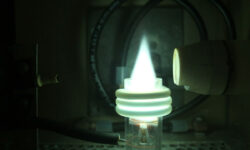Sources of Sodium
Sodium is an indicator of a coolant leak, often in conjunction with potassium and/or boron; these elements are present due to the additives used in many coolant formulations. The presence of these elements alongside detected glycol and water often indicate a severe or bottom-end leak, but the absence of glycol and water typically represent a top-end leak where the liquid portion of the coolant is being combusted or boiled out of the system.
Sodium is also an indicator of contamination with salt, whether it is from moisture ingression from a nearby source of saltwater, or airborne particulate ingression from nearby roads that are salted in the wintertime.
Users of activated alumina acid scavenging systems may see sodium appear as well, typically in conjunction with aluminum, especially in the first sample after a new set of cartridges is installed. A correlation with an increase in particle count will likely be observed.
On rare occasions, boron may be due to residual cleaner from drum/tote recycling, as the cleaners that are used may be borate-based.
Watch for the next article in the Elemental Spectroscopy blog series: Potassium.






